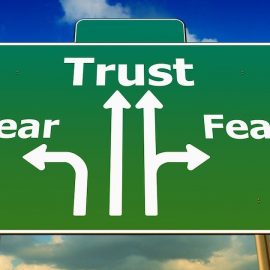

This article is an excerpt from the Shortform book guide to "Business Model Generation" by Alexander Osterwalder and Yves Pigneur. Shortform has the world's best summaries and analyses of books you should be reading.
Like this article? Sign up for a free trial here .
What makes a business innovative? What can you, as a leader, do to trigger innovation at your organization?
Innovative companies regularly introduce new products/services and revise their processes to affect positive changes in their business. From shifts in the economic environment to market research insights, there are many ways to spark innovation.
In this article, we’ll look at a few business innovation strategies you can use to generate innovative ideas to adapt or create your own business models.
Strategy 1: Generate Innovative Ideas
The first step in building your business innovation strategy is to generate and evaluate a large number of ideas before you can come up with viable options to create an innovative business model. To this end, assemble a diverse team of colleagues from across different departments and from different levels of your business to brainstorm and discuss possibilities. Further, consider including people from outside your business to help stimulate new ideas.
You can use one of the following objectives to trigger innovative ideas:
- Serve unmet market needs
- Create new products or services
- Disrupt an existing market
- Create a new market
In addition, asking “what if” questions will help you to explore potential possibilities and provoke new ideas. To begin your brainstorming session, consider how you can:
- Use your existing resources and infrastructure to expand or transform your business model.
- Add more value to your existing product and service offerings.
- Focus more specifically on your customers’ wants and needs.
- Create new revenue streams and pricing structures, or examine how you can cut costs.
| Established companies can find it difficult to define, challenge, and redesign their existing business models. The more successful these businesses become, the more difficult they find it to anticipate risks and proactively implement innovative strategies. In fact, pushing for innovation can seem risky during times of success. However, management experts argue that businesses need to establish a framework that allows them to analyze opportunities, align their operations with what they intend to offer, and ensure that they remain adaptable to ongoing changes in the market. The first step is for businesses to explicitly understand the strengths and limitations of their existing business models. Once they understand how the elements within their current business models interact, they’ll have a better understanding of the resources they can leverage to generate more ideas and create more opportunities. |
Strategy 2: Empathize With Your Customers
If you find out what your customers want and figure out ways to help them before you design your products and services, you’re more likely to discover new innovation opportunities. To find unsatisfied, or hidden needs that your customers may not even be conscious of, pair basic customer profiling (demographics) with a deeper analysis and exploration of your customers’ experiences and underlying motivations.
| Another way to approach this is to specifically look for problems and inconveniences that your customers face both throughout their experience with your business and their experience with your products and services. This is an effective way to create more value for your customers either in what you offer or how you interact with them. For example, one business noticed that consumers are reluctant to buy electric fryers because deep-fried food is unhealthy and the machines are difficult to clean—they transformed the problem into a solution by creating Actifry, a machine that creates tasty fries with only one tablespoon of oil. Actifry converted a problem into revenue totaling €1 billion by addressing customer concerns. |
Strategy 3: Create Visual Representations
Visual representations of your business model allow you to better understand how each of your elements connects and interrelates. They designed the business model template to encourage collaboration across teams and departments—it’s intended to be reproduced in a large format to allow groups of people, armed with Post-it™ notes and markers, to strategically discuss each element. The authors claim that Post-it™ notes and drawings can express ideas more succinctly than abstract concepts expressed in text. In other words, the visual representations give you something tangible to focus your discussions on and allow you to better communicate your ideas. (Osterwalder and Pigneur also developed a Toolbox to support the creation of online collaborative methods).
(Shortform note: The Back of the Napkin by Dan Roam argues that drawings can solve any problems. According to Roam, solving problems with images has nothing to do with being artistic and requires no creative talent—we’re all born with the innate ability to visualize and draw what we’re thinking even if we’re convinced that we have no aptitude for it.)
Strategy 4: Build Detailed Scenarios
Create scenarios around possible future environments and the impact they will have on the way you operate. This will not only help you to prepare adaptation strategies but will enable you to generate innovative ideas for groundbreaking products and services. To create informed future scenarios, you need to understand the business environment within which you intend to operate and the various forces that influence it. The authors recommend that you base your scenarios on the following four areas of your business environment:
| Market | Industry | Key Trends | Macroeconomic |
| Market Segments: Which segments are growing or require attention? | Suppliers & Value Chain Contributors: Who do you rely on & how do they impact you? | Regulatory: Which new rules & regulations will affect how you operate? | Global Market Conditions: What overall conditions could affect your market? |
| Needs & Demands: Where are customer needs not being met? | Stakeholders: Which stakeholders influence how you operate? | Technology: Which technological trends could threaten or enable your business model? | Capital Markets: How easy is it to obtain funding? |
| Market Issues: What issues are driving change? | Competitors: Who are your competitors and what are their strengths & weaknesses? | Societal & Cultural: Which shifts or trends will influence buyer behavior? | Economic Infrastructure: How does the public infrastructure affect your market? |
| Switching Costs: Why are customers switching to competitors? | New Entrants: Who are the new players in the market and what are their strengths & weaknesses? | Socioeconomic: What are the demographic trends for your market? | Commodities & Resources: What’s the price trend for the resources you need to operate? |
| Revenue Attractiveness: What are customers willing to pay for? | Substitute Products & Services: Which products & services could replace yours? |
| Risk Management Strategies Businesses face two types of risks: preventable risks (controllable risks that you can take measures to avoid), and external risks (natural and political disasters that you can’t control). While businesses can set rules and regulations in place to manage preventable risks, external risks are more difficult to predict and plan for since they’re largely based on speculation. Further, established businesses often assume that external trends will continue in a predictable way, and they find it difficult to look beyond their assumptions when planning for the future. However, the impact of Covid-19 on the workforce and consumer behavior emphasized that businesses are often impacted by forces beyond their control. Consequently, many experts argue that businesses need to consider how they can evaluate and manage unanticipated external risks in advance, and develop appropriate risk management strategies to lessen their impact. Businesses can’t prevent external risks from occurring so they must focus on identifying them, assessing their potential impact, and mitigating their effects. In other words, create a recovery plan that helps you to respond effectively to external events—your objective is to shorten your recovery time and minimize potential losses.But how can you predict the unpredictable? For the purposes of this technique, it’s beneficial to focus on early indicators of change in your environment, particularly in regards to politics, economics, technological advancements, regulation changes, and environmental forces. For example, many businesses, both within the UK and without, are feeling the impact of BREXIT regulations, which came into force at the end of 2020. However, businesses could have taken notice of the early indicators of BREXIT (there was a call for a referendum on the UK’s EU membership in 2012) and planned for the worst-case scenario. Businesses that created strategies for BREXIT’s impact on global trade ahead of the trade agreement are better prepared to respond to the additional administrative burdens than the businesses that passively waited for the deal to be finalized. |
Strategy 5: Create a Story to Communicate Your Business Model
Creating a story centered around the value that your business model offers, from the perspective of either an employee or customer, will enable you to engage your listeners and effectively communicate your business model. You can create multiple stories throughout the process to instigate feedback and refine your business model. Further, once you’ve defined your business model, you can use the story to communicate it across your business and to external organizations.
(Shortform note: Marketing expert and author of Purple Cow, Seth Godin, argues that businesses can’t overcome resistance unless they create and frame their stories from the perspective of each audience they target. In other words, to effectively engage and resonate with your listeners, you need to recognize that each audience you address has different priorities. For example, your team cares about how your business model will affect their jobs, whereas your investors care about how they’ll profit from your business model.)

———End of Preview———
Like what you just read? Read the rest of the world's best book summary and analysis of Alexander Osterwalder and Yves Pigneur's "Business Model Generation" at Shortform .
Here's what you'll find in our full Business Model Generation summary :
- The nine elements that make up any successful business model
- Different ways you can combine these elements to create business model patterns
- Techniques you can use to generate innovative ideas






